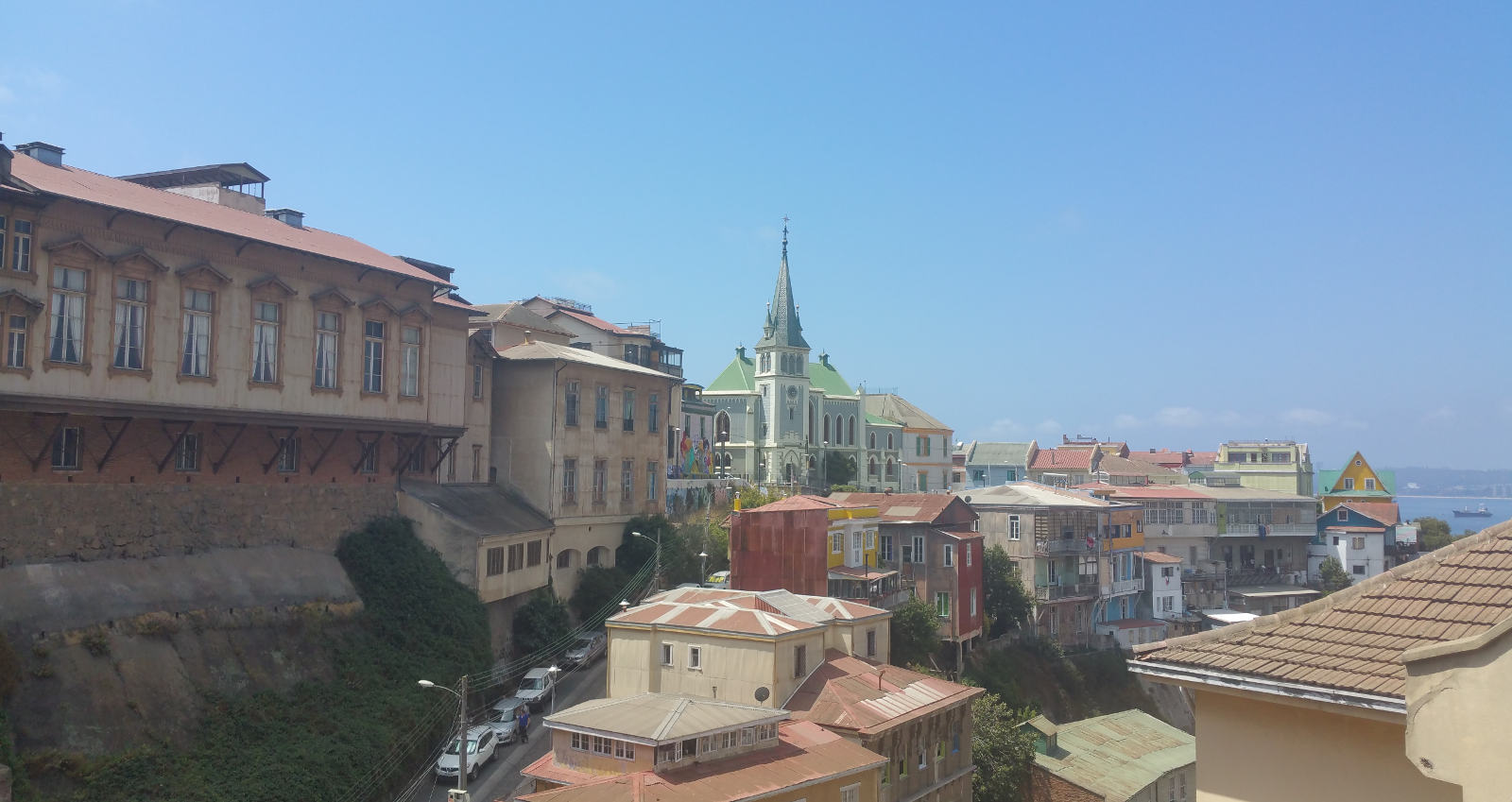A visit to the Chilean capital in the Andes

The Gran Torre Santiago, tallest building in Latin America
veryone I met on the Anglophone version of the
free walking tour of Santiago seemed to be on their way to or from Patagonia. Hardly surprising given that region's purported beauty and Santiago being just another large Latin American capital. Is Santiago worth a visit in its own right? You be the judge.

The view of the snow capped Andes from the Gran Torre Santiago
The mountains that draw travelers down to Patagonia are part of the same chain that surround the city of Santiago. The
Andes stretch the whole length of South America and form the border between Chile and Argentina. The mountains are visible from virtually every part of the city. Even during the hottest months of the Chilean summer there is still snow visible on some of the tallest peaks surrounding the city. There are several smaller hills inside the city with remarkable views. One,
Cerro Santa Lucia, is the middle of downtown Santiago and contains a small park. It features a fountain and a couple of 19th century forts with excellent views of the surrounding area. A much larger hill that looms over the city to the north is
Cerro San Cristobal, identifiable by a huge statue of the Virgin Mary overlooking the city.

A fort inside the Cerro Santa Lucia park
There are cable cars and a funicular to take people up as well as a road and hiking trails. The hill is more than 300m tall and offers views of the mountains, downtown Santiago as well as the skyscrapers of the Providencia neighborhood. Many residents of the city take advantage of the Sunday street closures to ride bikes up to the top of the Cerro.

Plaza de Armas
There is significant seismic activity around Santiago. Frequent earthquakes and armed conflicts between the settlers and natives have destroyed many of the older colonial buildings but the downtown still has many excellent examples from the 18th and 19th century. Several of them are in the central square, the
Plaza de Armas, including the central post office, the cathedral and the Palacio de la Real Audiencia which now houses a museum. The downtown portion of the city is a mosaic of old and new architecture with busy, crowded streets.

Colonial buildings at the Plaza de Armas

The Baha'i Temple
The nearby neighborhood of
Providencia, on the other hand, feels much more modern with wide tree-lined streets and attractive bars and eateries. Providencia is where you'll find the tallest building in Latin America, the 64-story
Gran Torre Santiago. As far as glass and steel monoliths go it's not much to look at but the observation deck on the top two floors is well worth a visit for it's views. A newly constructed, and somewhat offbeat attraction in Santiago is the
Baha'i Temple. The temple is built into the side of a hill offering yet another excellent view over the city. The building itself is a unique modern structure that looks like a huge shell. The surrounding garden is one of the most serene and meditative places in the bustling city.

A street in the Lastarria neighborhood
Chilean food and drink, like in other South American countries, has a lot of European influence. Some of the most common foods include fully loaded hot dogs and meat sandwiches. Avocados are huge and delicious (and confusingly called palta instead of aguacate). German immigrants in the southern part of the country brought over their love for beer and opened breweries dating back to the 19th century. There are excellent lager options as well as a growing craft beer scene. Chile also rivals Peru in production of
Pisco, the local brandy.

Going up a funicular in Valparaiso
Popular day trips from Santiago include a visit to the Pacific coast towns of
Viña del Mar and
Valparaiso. Viña is the closest beach resort town to Santiago and provides a good place to cool off when the city heats up. Valparaiso was a prominent port city throughout Chile's history as well as a hub for the arts. Every description of the town today includes the word "bohemian" and references the ubiquitous street art. The downtown is built upon a huge number of hills with buildings seemingly hanging off cliffs all around. There are several working funiculars dating back over a hundred years that help transport people between the different elevations of the town. Bars and restaurants are busy at all times reflecting a more leisurely pace of life than the capital. Another popular destination near Santiago is the
Cajon de Maipo (canyon of the Maipo river). It's a huge area in the mountains with picturesque views and outdoor activities.

A view from a hill in Valparaiso









